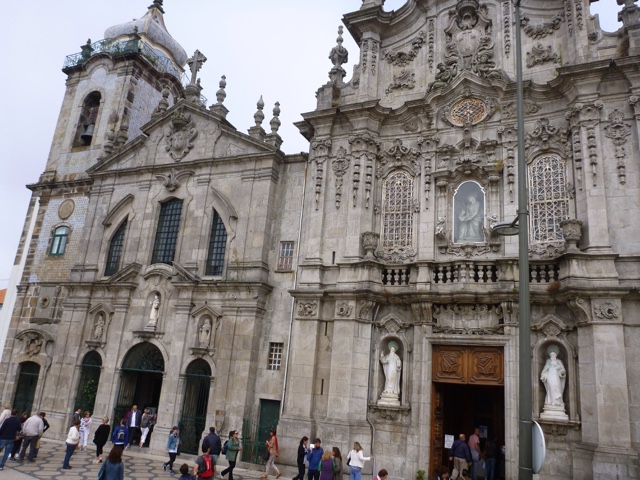Porto is the capital of the north in Portugal and is the country's second largest city. Houses with red tiled roofs tumble down the hillside to the riverbank punctuated by beautiful old church towers. Cobblestone streets are the norm some with mosaic patterned stones. The old town is today preserved as a World Heritage Site. We spent a good deal of time meandering up and down the twisty narrow steep streets of the old district enjoying the sights and a glass or two of wine. We crossed over the river to visit the port wine cellar area of Gaia and of course indulged ourselves there as well. A couple of hours on the open air tour bus gave us a really good feel for the city and when one is in Porto it seems a boat trip down the Douro is a must and it certainly was a great way to get a different view of this unique city. The streets were very busy with even small cafes having a couple of tables outside. It would seem that you were on a pedestrian street as it was so narrow and covered with people and then a taxi would wind its way through. Would be a drivers nightmare.
Porto is situated on the Douro River which snakes picturesquely through the city. Tour boats travel continuously up and down the river treating the multitude of tourists to views of the city from the river.Porto is very hilly and rises steeply from the banks of the river
The cathedral sits high up on the hillside
The baroque altars are very lavish and were designed by Italian craftsman
Streets are jammed with pedestrians even though this is not a pedestrian street. The tour bus we were on went down this street and the people simply parted like a giant wave.
The side of this church was decorated with a beautiful design all done in tiles
This is actually two churches and as it is dictated that two churches of different denominations cannot be joined the narrowest house in Portugal joins them. The house is the door and two windows between the churches and is one meter wide. It would be quite fascinating to see inside.
These fishing boats sit peacefully waiting for their owners evidence that some still rely on old ways to make a living.
Following the winding narrow cobblestone streets in search of a port house.
Inside Taylor Fladgates barrel cellar. Years of port just waiting to be drank.
The streets are so narrow that you can hardly see them through the density of the buildings.
Not an inch to spare between buildings
Old port transport boats called rabelos sit moored along the river.
Sidewalk cafes are everywhere and yes I am standing in the middle of a street though no one seems to pay any attention
The busy Ribeira as the waterfront is called is teaming with people and is a great place to sit and have a glass of wine and observe.
Church towers pop up between colorful buildings all through the old town.
The church on the right is Sao Francisco and is Portos only Gothic church. Though the outside is plain the inside is stunning with lavish carvings all covered in gold leaf from the early 1700s. After visiting the church one descends down into the crypts where the walls and floors are lined with tombs and the remains of the parishioners end up in a bone heap or ossuary which is viewed through a trapdoor if the skulls on top of the tombs were not quite creepy enough.
Six bridges cross the Douro River in Porto with this combination being the busiest. Called the Ponte Dom Luis I the upper bridge is for the metrotrain system and the lower one for vehicles. Both have pedestrian walkways. The views from the upper bridge were spectacular
The whole city is inhabited and it was very common to have someone hanging their laundry out over the umbrellas of a restaurant down below. Really added to the lively nature of the city.






















No comments:
Post a Comment